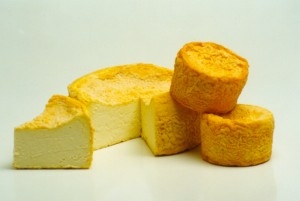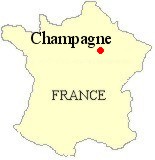
|
|
|||||
Langres originates from the Langres plateau, at the source of the Seine in the Champagne region, on the border with Burgundy. It has been made since the 17th century and takes its name from the main market town at the time, Langres, in the French department of the Haute Marne. Gaining A.O.C. recognition as late as 14th May 1991 it can only be made in the three regions of Cote-d'Or, Haute Marne and Vosges. Made with cows' milk, Langres is a washed rind cheese and is matured for 2 to 3 months in humid cellars (15 days to one month for the smaller Petit Langres) and receives regular washings of brine and annatto. Annatto, or 'rocou' in French, is an orange pigment taken from the Annatto tree. The cheese is sometimes washed in Marc de Bourgogne producing Langres au Marc. With a sticky brown-red to light brown rind is has a strong and penetrating bouquet. The paté is firm and supple and melts in the mouth, releasing a complex mixture of aromas. Further maturing produces a creamier texture and the flavour becomes pronounced with a spicy tang. The most unusual feature of this cheese is its sunken top, called a 'fontaine' or 'curvette'. Into the fontaine can be poured Champagne or Marc au Bourgogne allowing the cheese to be savoured as one might enjoy a Stilton with port. More often, the Langres is accompanied with full bodied wines of Bordeaux and Burgundy. Our Langres is made with unpasteurised cows milk with a 50% fat content and is available as a 1100g cutting cheese, 150cm in diameter and 50mm deep, or as an individual Petit Langres at 250g, 70mm in diameter and 60mm deep. It is available all year round but is at its best from spring until late autumn. Click here or press your 'Back' button to return |
|
|||||
| All articles © www.teddingtoncheese.co.uk | ||||||
